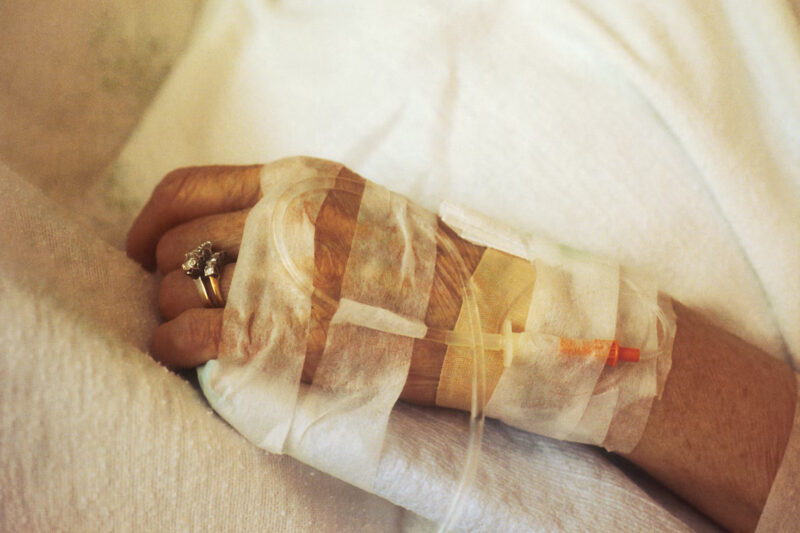Founded in 2004 through the merger of Sanofi-Synthelabo SA and Aventis, Sanofi-Aventis is a big name in the pharmaceutical industry. The company manufactures and distributes pharmaceutical solutions for patients with diabetes, cancer, rare diseases, etc.
In the late 1990s, Sanofi-Aventis proposed its new drug, Taxotere, for cancer treatment. After its first phase of clinical trials, Taxotere received FDA approval in 1999. It was approved only for small-cell lung cancer patients in whom platinum-based chemotherapy was ineffective.
Gradually, approval was granted for cancers of the prostate, head and neck, stomach, and breast. By 2010, the drug had a vast market, being used in the cancer treatment of over one million patients. However, patients started reporting cases of adverse side effects which Sanofi failed to warn about.
In this article, we will discuss Sanofi’s burden of responsibility as a drug manufacturer to disclose Taxotere’s health risks.
Drug Manufacturers’ Duty to Warn of Known Dangers
Consumers have every right to know what exactly they put into their bodies, be it a food item or medication. Drug makers are charged with product liability because of injuries suffered by patients in the form of side effects.
Before a drug is proposed for a specific treatment, the manufacturer must conduct clinical trials to test its efficacy and risks. They are responsible for disclosing to the public every known danger associated with the medication.
The aim is to be transparent with the consumer so they can make an informed decision about using a drug. However, drug manufacturers need not warn about unknown dangers associated with their products. Also, informing of known side effects is not a one-time task but an ongoing one.
In many cases, new side effects of a drug come to light over time. The drug manufacturer must provide continual and timely warnings of the new dangers as and when they’re discovered.
Holding Intermediaries Accountable
Every new drug in the market will have intermediaries that play a key role in its distribution. These entities are usually more than one, and they stand between the manufacturer and the consumer. For instance – wholesalers, retailers (pharmacists), and physicians.
Besides providing adequate warnings on a drug’s labels, drug makers must inform the intermediaries of the known side effects. This means a physician or pharmacist must be aware of the drug’s possible dangers. They must also be aware of any conditions that may exacerbate those side effects (if revealed by the drug maker).
In case of failure to warn patients of every known side effect (no matter how slight or serious), the intermediary becomes the liable party. However, if they received no clear warnings from the drug maker, the latter becomes liable for patient injuries.
According to TorHoerman Law, plaintiffs are suing Sanofi-Aventis because it failed to warn pharmacists and physicians of Taxotere’s known side effects. These include epiphora or excessive tearing, partial or permanent vision loss, severe eye pain, alopecia (hair loss), and canalicular stenosis or damaged tear ducts, among others.
Unusually Susceptible People
A drug may cause extreme reactions in specific groups of people (hypersensitive to its ingredients). The drug’s manufacturer need not anticipate every possible adverse effect that may occur in every type of patient.
In the case of Sanofi-Aventis, a uniquely susceptible patient cannot file a Taxotere lawsuit. Even if they do, their chances of winning may be bleak. However, if the manufacturer knew that certain patients were more susceptible to the side effects (but failed to warn), the lawsuit may hold in court.
The FDA’s Role in Drug Approval
The Food and Drug Administration (FDA) regulates the pharmaceutical industry in the interest of public health. This means the organization will ensure a drug is effective in its purpose and generally safe to use.
The FDA’s watchdog for the pharmaceutical system is the Center for Drug Evaluation and Research (CDER). This body evaluates new drugs before they are made available in the market. The evaluation is conducted to let patients and physicians have complete knowledge they need to use a drug wisely.
The CDER is responsible to ensure a drug’s benefits outnumber its risks before the FDA grants its stamp of approval. So, how would it all work (taking Sanofi as an example)?
- Sanofi-Aventis would have had to conduct clinical trials to test Taxotere’s efficacy and safety.
- It would have offered the CDER trial evidence that the drug is safe and effective for its intended use.
- The CDER’s team of pharmacologists, chemists, statisticians, and physicians would have reviewed the company’s findings and its proposed labeling.
- If the team’s unbiased review process found that Taxotere’s benefits outweighed its dangers, the drug would have received FDA approval.
The CDER does not test the drug but may conduct limited research to understand its safety, quality, and efficacy. The FDA uses a structured framework to grant its approval.
Taxotere’s Clinical Trials and Post-Marketing Surveillance Programs
In its clinical trials, Sanofi (Sponsor) reported adverse drug reactions in at least 5% of the patients. Though alopecia (hair loss) is mentioned as one of the side effects, no detailed information is available for ophthalmologic injuries. However, a higher incidence of alopecia was reported in the case of combination chemotherapy (with other agents involved).
Once Taxotere was granted FDA approval, the process of monitoring its safety would continue through post-marketing surveillance programs. The primary purpose of conducting post-marketing surveillance is to identify any adverse reactions that were unrecognized during the pre-market review.
The FDA uses active post-marketing surveillance as a method for reevaluating approval and updating drug labels. The database supporting its post-marketing surveillance is called the FDA Adverse Event Reporting System (FAERS). There is a MedWatch program in place to enable patients and physicians to voluntarily report serious drug reactions.
In the case of Taxotere, the FDA conducted multiple post-marketing surveillance programs. Several black box warnings are associated with the drug, including toxicity-related death, hypersensitivity, fluid retention, hepatotoxicity, and neutropenia.
The reports do mention eye disorders as one of the adverse reactions, namely, cystoid macular edema (CME). If a patient is detected to be suffering from the said condition, the FDA advises to immediately stop Taxotere treatment. The patient must receive relevant CME treatment and alternative non-taxane treatment for their cancer.
Alopecia is also mentioned as one of the common side effects of the drug. Interestingly, a 2015 post-marketing surveillance report includes an FDA statement that it received patient concerns surrounding alopecia’s label warnings. Sanofi had not clarified whether the condition was permanent or temporary.
In response, the organization searched the drug maker’s global pharmacovigilance database to find most reports provided no outcome for alopecia. Out of the 2172 cases reported, 70% of patients received combination chemotherapy with other agents (also known to cause alopecia).
There were only 117 cases of irreversible or permanent alopecia where the condition lasted over two years. Hence, the FDA established a potential or causal association that warranted a label updation. Sanofi’s Taxotere labels were then updated to include “cases of permanent alopecia have been reported.
Final Thoughts
Plaintiffs (especially women treated for metastatic breast cancer) have claimed that they were unaware of the risks of Taxotere. Many developed permanent hair loss post-chemotherapy only to later discover that a safer taxane alternative was available (Taxol).
In a 2005 Sanofi-funded study published in the Journal of Clinical Oncology, Taxotere was shown as superior to Taxol. However, it was later found that the outcomes were overstated. Sanofi kept profits over people, marketing its product as more potent and safer than it is.
Currently, there are close to 30,000 lawsuits against the drug manufacturer, divided into hair loss and vision damage categories. The former is consolidated into MDL 2740 and the latter into MDL 3023. In 2021, Sanofi won its second Bellwether trial as the jury found that the drug maker had warned about permanent hair loss.
Even then, plaintiff lawyers showed confidence that positive verdicts were in store for the future. Given its current course, it may take another year before settlements are made. As of now, lawyers are still accepting Taxotere cases as they patiently anticipate the MDL’s progression.


















